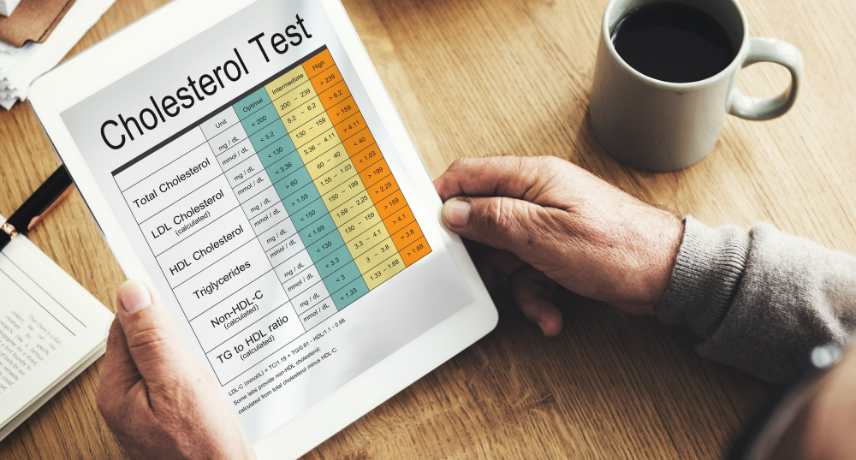22nd August, 2024

Hyperlipidemia or high cholesterol, means you have too many lipids (fats) in your blood. Your liver metabolizes cholesterol to help you digest food and makes hormones from it. Since your liver can make as much cholesterol as you need, the cholesterol in your food is extra.
Normal cholesterol is below 200 mg/dl, values in the range of 200-239 mg/dl is borderline high and values more than 240 mg/dl represent high cholesterol levels. "DYSLIPIDEMIA" (dysfunctional fat in the bloodstream) is a disease where inflammatory cholesterol particles get deposited in the walls of blood vessels causing chronically decreased blood flow to vital organs like the brain, heart, kidneys and limbs or causing any acute event in the form of heart attack, cerebral stroke, acute pain in legs and even sudden cardiac arrest.
Lipoproteins are transporters of cholesterol in the blood and present them to the liver for metabolism. Among lipoproteins Low Density Lipoprotein; LDL. (reference range: 130-159 mg/dl moderately high and 160-180 mg/dl- High) is the bad cholesterol that clogs your arteries. Another lipoprotein Very Low Density Lipoprotein; VLDL carries triglycerides that add to artery plaque. High Density Lipoprotein; HDL being good cholesterol, brings it back to get metabolized In liver. For your HDL, you do not want a number below 40 mg/dl.
Men with diabetes, hypertension, smokers, CKD, stress, Type A sedentary lifestyle, elderly, are the ones who are at increased risk of having ill effects of LDL (reference range: 130-159 mg/dl). Also those having family history of dyslipidemia, stroke at young age, sudden cardiac death are at increased risk. Hence, this group needs primary prevention. Those who already had an event of heart attack, cerebral stroke or is a known case of vascular disease require secondary prevention for high cholesterol to prevent further acute events.
Hyperlipidemia is like the tip of an iceberg when clinical signs are concerned and only patients having genetic problem with cholesterol clearance may show skin xanthomas or corneal arcus (the ring of cholesterol in eyes). For diagnosis of this problem your doctor will want your medical history and physical examination, calculate your ASCVD risk score, assess your risk factors and disease status and advise blood test with lipid panel. Other battery of tests in this aspect are hs-CRP, lipo- protein A APO-B and coronary calcium score.
Preventive prescription will include lifestyle changes, dietary modifications, routine exercise, control of contributing diseases and pharmacological components. Whole plant based diet with generous amount of vegetables, whole grains, fruits, vegetable oil plenty of fish, flax seeds, high fibre foods like oats should be included in diet. Saturated fats, red meat, butter, cheese, ice-cream, egg yolk, fried foods, junk foods should be limited. Avoid smoking, high sugar containing food and beverages. Fat oil supplements like DHA+EHA in daily diet is excellent to reduce triglycerides. Control of diabetes, thyroid and other hormonal disorders is also a key component in disease management. Regular exercise with target of 150 minutes per week of moderate intensity physical activity and loss of 5-10% of initial weight is key to healthy life.
In pharmacological management, statins brought a major breakthrough. Apart from lowering cholesterol levels statins act as anti-inflammatory and plaque stabilizers. Many clinical trials have proven the efficacy of this drug both in primary and secondary prevention. Other medicines like ezetimibe, cholestyramine and evolocumab are used accordingly to lower cholesterol levels. Fibrates and fish oil decrease triglyceride levels.
To conclude, cholesterol has become a household name with dreaded impressions. Hence, proper management is an important part of modern medicine and dietary plans, so awareness about it is of utmost need.